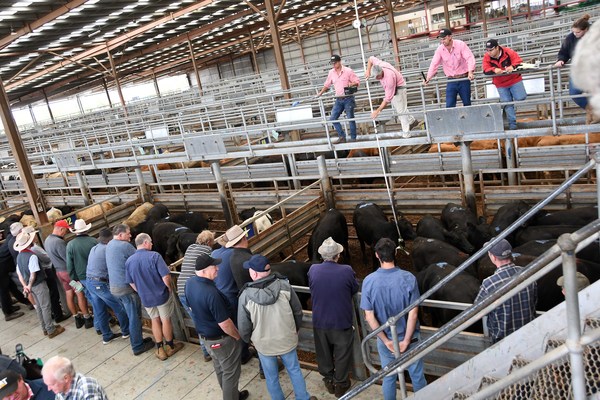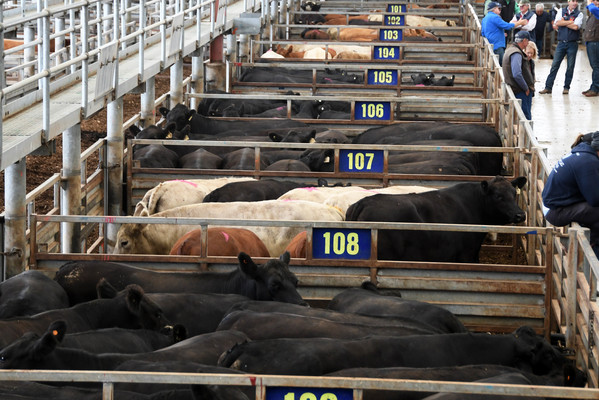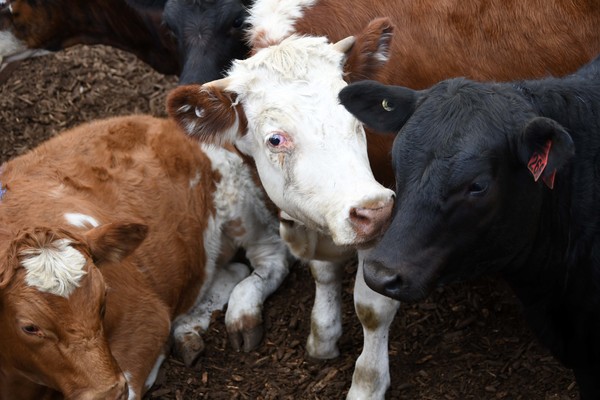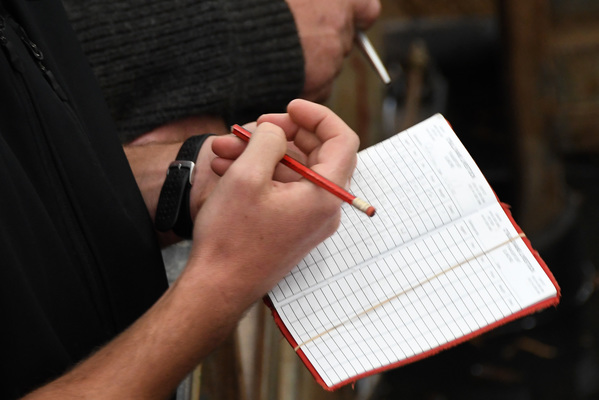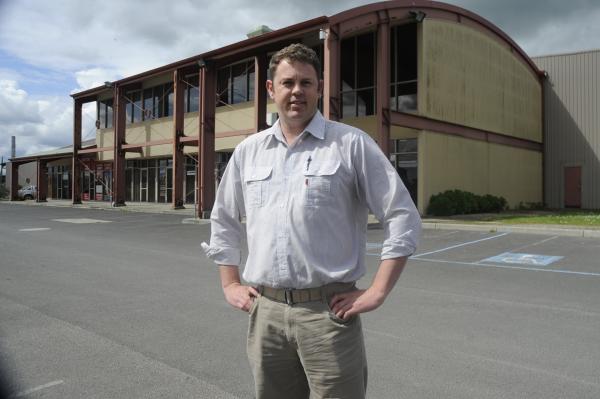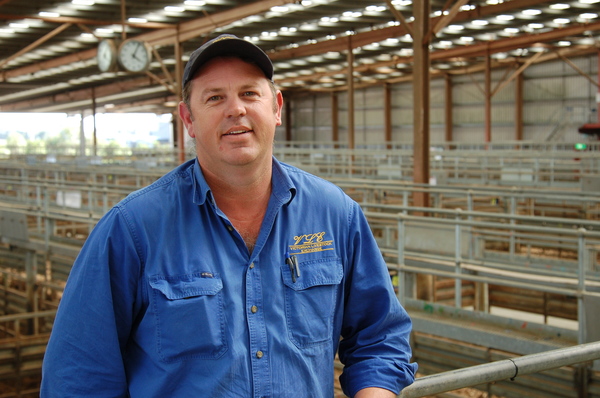The ambitions of the VLE saleyards were, perhaps, evident right from the very start. The clue is the name. Based at Pakenham, the state’s first privately run yards owner/operator wasn’t called the Pakenham Livestock Exchange, nor the West Gippsland Livestock Exchange, nor even the Eastern Victoria Livestock Exchange. The vision was much bigger, and the name was suitably grand – the Victorian Livestock Exchange. In the second of our three-part series, ANDREW CANTWELL sat down with VLE managing director Wayne Osborne to get a sense of the bigger picture.
“We’ve been seen as a big company, but we really aren’t.”
There’s a little mythologising in the origin story of VLE Pakenham.
And why not.
Any business that lasts more than two decades should get a little leeway in how it chooses to retell its early years.
VLE managing director Wayne Osborne tells it like this.
His grazier father, Graham (a VLE founding and the previous managing director), and a number of others had grown tired of buying cattle and then holding them for a couple of weeks to heal of lameness.
The issues with their hooves came from standing on harsh concrete yard floors for the many hours of the selling process.
The story goes that Graham had said to himself that if ever he was in a position to do something about it, he would.
This was at a time when yards were primitive arrangements, constructed on concrete from rusted railway iron and weathered wood.
Wayne tells the story easily … it’s clearly a favourite.
And the animal welfare aspect is certainly built in to the operations of the VLE and always has been.
The point of that story is that the VLE has approached the operation of yards in a way vastly different to what had gone before.
“We’ve always hit above our weight,” Wayne Osborne told the Gazette.
“We’ve been seen as a big company, but we really aren’t.”
And it’s clear that by any measure, the VLE has been a game-changer in the saleyards industry.
The yards at Pakenham were a revolution when they opened in 1999, with the soft earth floor and roofed pens unprecedented additions; and upgrades since the purchase of their Koonwarra yards in 2006 have resulted in those yards being considered close to the best in the state – only the yards at Wodonga may have a stronger claim.
In many ways, it’s a testament to the strength of will of then managing director Graham Osborne and his backers.
“When we built, some people thought Graham was crazy,” Wayne said.
“They said the roof would fly away.
“When we started in 1999, it was the only one with a roof.
“There was a lot of opposition … some of those opposed were vehement, some abusive.”
The Pakenham facility was all based around that early animal welfare aim.
“How do you stop lameness … put them on a soft, earth floor,” Wayne said.
“And things progressed from there.
“How do you stop an earth floor turning to mud in the winter … you put on a roof.”
Wayne says the original partners spent $9 million setting up the Pakenham facility.
A prime position near the bustling south-eastern suburbs, and neat lines of steel pens and an expansive roof show the money was well spent.
But this, too, was fuel for the critics who claimed the backers had overcapitalised and would never make a return on that level of costs.
Rumours and tall stories about the yards have been a constant, Wayne indicated.
There’s another narrative – one more central, of boldness, opportunity and calculated risk – that takes a little longer to tease out, but is equally worth the telling.
And it’s simply this, that the VLE means business.
Hard-nosed businessmen don’t just shell out $9 million for the comfort of cows.
The aim was to reset the sector – to add a dose of commercial reality where ratepayer-subsidised services, and small yards operated by single agents simply for competitive advantage were the norm.
Wayne said that Graham had long held the view that what was needed in the saleyards sector was a third party – commercially driven – to operate yards.
A third party could specialise and build expertise, and would provide innovation – creating better returns for farmers, and providing better results for buyers.
When, during the 1990s, it became clear that local government was keen to get out of the saleyards business, and single-agent yards were also undergoing consolidation, the opportunity became clear.
And when the Dandenong closure was announced, the timing was right.
The partners acted decisively.
Chris Sleigh, an industrial land developer, was an early partner critical to the VLE’s development. His family owned the land that the VLE was built on, Wayne said.
The yards initially had a 500-metre buffer zone to the nearest property. But land sales around the yards for an industrial estate zone allowed the partners to quickly pay down debt.
The business was listed on the Bendigo Stock Exchange (BSX) for a time, and VLE annual reports lodged with the BSX show that land sales accounted for a sizeable proportion of income in the early years, and that just a handful of years after starting up, the VLE board was able to declare for the first time a small dividend of five cents on the dollar for shareholders.
By 2004, the VLE was able to branch out into saleyards services such as yards design, consultancy, and management operations.
Wayne said the VLE still operated services to the Mountain cattlemen in Victoria and NSW, as far as Cooma, and at Mortlake.
The big move came in 2006, when several yards across West, Central and South Gippsland were snapped up.
The move achieved two things – some competing saleyards were closed down; and those that were retained were put on a commercial footing.
Approaches were also made in the west of the state, but without result.
Wayne said the acquisitions allowed the VLE to keep and train up staff.
At Pakenham, the VLE had been able to offer perhaps two-and-a-half days work each week, on market days. But by purchasing other yards, the staff could be working four to five days a week.
The result was a greater responsiveness for producers and others associated with the market.
“When they call, someone answers,” Wayne said.
“And something gets done.”
“With council yards, they may be running two days a week, which is obviously an issue with part-time staff.”
Operating across a couple of sites allowed the VLE to retain people of “calibre”, Wayne said – at a time when the necessary skillset was being lost in Gippsland.
As well as the best staff, the VLE has been able to attract and keep the best buyers.
Before they had even commenced, Graham had consulted with the buyers.
“We asked them and they told us what they wanted,” Wayne said.
“It’s not rocket science.”
Those needs were incorporated into plans at an early stage.
The effects of that initial consultation have been dramatic.
Producers sent stock in from interstate and other parts of Victoria to take advantage of the better prices on offer.
Wayne said that roughly 100,000 head went through the yards at Pakenham last year. Of that, about five per cent came from NSW, and 30 per cent for northern and western Victoria.
“It does service a large area of the state,” Wayne said.
More than anything, the VLE is an operation attuned to market conditions.
But the critics are still active, and have concerns the VLE’s size and influence mean they are in a position not just to assess the market, but to set the market.
There’s another story about the VLE that is told in hushed tones, of a meeting between a significant VLE figure and West Gippsland stock agents towards the end of last year, where the agents were told to get used to sending cattle south over the Strzelecki ranges to the Koonwarra yards.
Apparently, that message was not received well.
One producer, who did not wish to be named, pointed to the power of the supermarkets, which effectively set the price of fresh milk some years ago – as part of a discounting war – at a level that sent many dairy producers to the wall.
No-one who owns a farming enterprise wants to be told what they’re going to get for their efforts.
They, too, want the market to speak.
Next week, in the final of our three-part series, we take a look at the rival Longwarry saleyards bid, with stock agents and producers risking millions of dollars to keep competition alive in West Gippsland.
Got some insights you’d like to share on the issue. Contact us at dailyeditor@starnewsgroup.com.au

